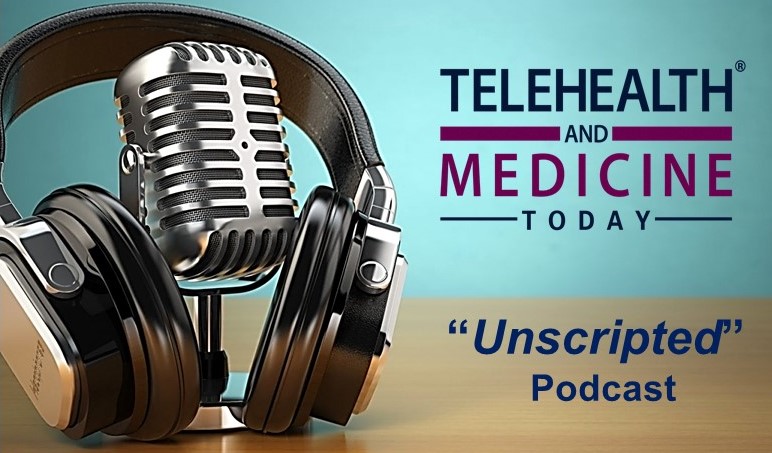A COVID-19 Telehealth Impact Study—Exploring One Year of Telehealth Experimentation
DOI:
https://doi.org/10.30953/tmt.v6.280Keywords:
Claims Data, COVID-19 Pandemic, Digital Health, Survey, TelehealthAbstract
Importance: This three-part study characterizes the widespread implementation of telehealth during the first year of the COVID-19 pandemic, giving us insight into the role of telehealth as we enter a stage of “new normal” healthcare delivery in the U.S.
Objective: The COVID-19 Telehealth Impact Study was designed to describe the natural experiment of telehealth adoption during the pandemic. Using a large claims data stream and surveys of providers and patients, we studied telehealth in all 50 states to inform healthcare leaders.
Design, Setting, Participants: In March 2020, the MITRE Corporation and Mayo Clinic founded the COVID-19 Healthcare Coalition (C19HCC), to respond to the pandemic. We report trends using a dataset of over 2 billion healthcare claims covering over 50% of private insurance activity in the U.S. (January 2019-December 2020), along with key elements from our provider survey (July-August 2020) and patient survey (November 2020 - February 2021).
Main Outcomes and Measures: There was rapid and widespread adoption of telehealth in Spring 2020 with over 12 million telehealth claims in April 2020, accounting for 49.4% of total health care claims. Providers and patients expressed high levels of satisfaction with telehealth. 75% of providers indicated that telehealth enabled them to provide quality care. 84% of patients agreed that quality of their telehealth visit was good.
Results: Peak levels of telehealth use varied widely among states ranging from 74.9% in Massachusetts to 25.4% in Mississippi. Every clinical discipline saw a steep rise with the largest claims volume in behavioral health. Provision of care by out-of-state provider was common at 6.5% (October-December 2020). Providers reported multiple modalities of telehealth care delivery. 74% of patients indicated they will use telehealth services in the future.
Conclusions and Relevance: Innovation shown by providers and patients during this period of rapid telehealth expansion constitutes a great natural experiment in care delivery with evidence supporting widespread clinical adoption and satisfaction on the part of both patients and clinicians. The authors encourage continued broad access to telehealth over the next 12 months to allow telehealth best practices to emerge, creating a more effective and resilient system of care delivery.
Downloads
References
Verma S. Early impact of CMS expansion of medicare telehealth during COVID-19 [Internet]. Health Affairs Blog; 2020 [cited 2021 July 10]. Available from: https://www.healthaffairs.org/do/10.1377/hblog20200715.454789/full/?source=email
Weiner JP, Bandeian S, Hatef E, Lans D, Liu A, Lemke KW. In-person and telehealth ambulatory contacts and costs in a large US insured cohort before and during the COVID-19 pandemic. JAMA Netw Open. 2021;4(3):e212618. https://doi.org/10.1001/jamanetworkopen.2021.2618
Clinical Classifications Software (CCS) for ICD-10-PCS (beta version) [Internet]. Agency for Healthcare Research and Quality; 2019 [cited 2021 Feb 1]. Available from: https://www.hcup-us.ahrq.gov/toolssoftware/ccs10/ccs10.jsp
Diversity in medicine: Facts and figures 2019 [Internet]. American Association of Medical Colleges; 2019 [cited 2021 Mar 28]. Available from: https://www.aamc.org/data-reports/workforce/interactive-data/figure-18-percentage-all-active-physicians-race/ethnicity-2018
O’Horo JC, Cerhan JR, Cahn EJ, Bauer PR, Temesgen Z, Ebbert J, et al. Outcomes of COVID-19 with the Mayo Clinic model of care and research. Mayo Clin Proc. 2021;96(3):601–18. https://doi.org/10.1016/j.mayocp.2020.12.006
Pierce RP, Stevermer JJ. Disparities in use of telehealth at the onset of the COVID-19 public health emergency. J Telemed Telecare. 2020 Oct 21. doi: 10.1177/1357633X20963893
Eberly LA, Kallan MJ, Julien HM, Haynes N, Khatana SAM, Nathan AS, et al. Patient characteristics associated with telemedicine access for primary and specialty ambulatory care during the COVID-19 pandemic. JAMA Netw Open. 2020;3(12):e2031640. https://doi.org/10.1001/jamanetworkopen.2020.31640
Lam K, Lu AD, Shi Y, Covinsky KE. Assessing telemedicine unreadiness among older adults in the United States during the COVID-19 pandemic. JAMA Intern Med. 2020;180(10):1389–91. https://doi.org/10.1001/jamainternmed.2020.2671

Downloads
Published
How to Cite
Issue
Section
License
Copyright (c) 2021 Francis Campion, Stephen Ommen, Helayne Sweet, Nilay Shah, Barbra Rabson, Nick Dougherty, Jennifer Goldsack, Peter Sylvester, Karen Jones, Aaron Burgman, Nathalie McIntosh, Lindsey Sangaralingham, David Jiang, Jeffrey McGinn, Ricardo Rojas, Tim Suther, Brian Anderson, John Halamka,

This work is licensed under a Creative Commons Attribution-NonCommercial 4.0 International License.
Authors retain copyright of their work, with first publication rights granted to Telehealth and Medicine Today (THMT).
THMT is published under a Creative Commons Attribution-NonCommercial 4.0 International License.
















